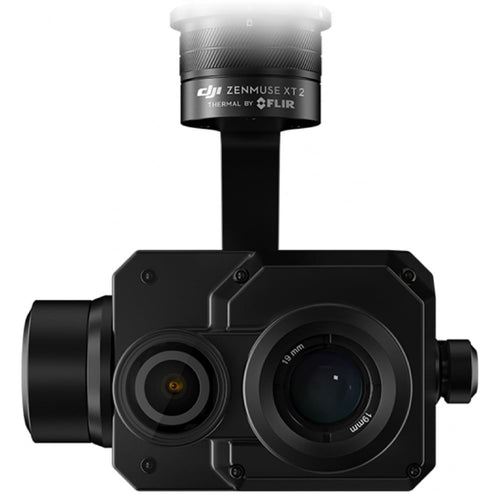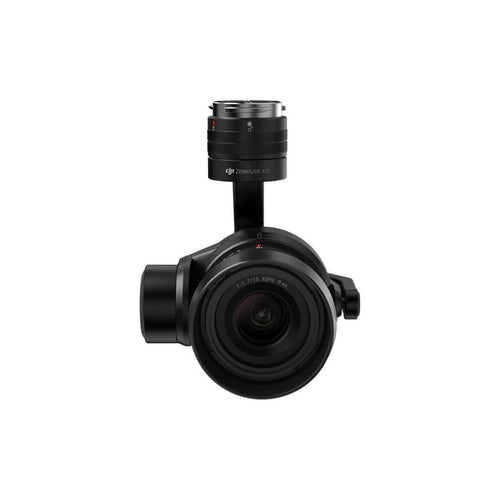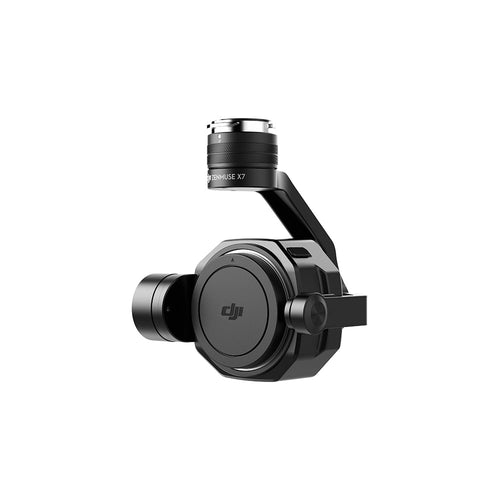
Increased accuracy, raw efficiency and enhanced safety - DJI drones are transforming the way that companies around the world are conducting energy inspections.
Whether it is for wind, solar or power line checks, businesses are increasingly turning to drones for inspection tasks, with UAVs (unmanned aerial vehicles) yielding a real return on investment (ROI) across the sector.

In fact, a white paper - entitled The Case For Drones In Energy - published by American-based aerial intelligence firm, Measure, states that one international energy company realised a 95% ROI for drone inspections on wind farms by way of cost savings and increased efficiencies, while another interesting snippet highlights that a solar farm inspection by drone costs up to 46% less than a manual inspection.
Put simply, when it comes to energy inspections, drone programmes provide better data to inform business decisions and crucially, maximise energy production. They support industry efforts to avoid hazardous man-hours; reduce costs for maintenance, inspections, and repairs; and improve efficiencies and core competencies across operations.
With demonstrated inspection time per wind turbine of 15-30 minutes, drones reduce man-hours and turbine downtime for maintenance checks by over 75%.
The Case For Drones In Energy - a White Paper by Measure
And there's a range of DJI drones - as sold by DJI Gold Partner heliguy™ - on the market to help you take your energy inspections to the next level, providing a cost-effective end-to-end solution.
In this heliguy™ Insider blog, we take a look at how drones are helping the energy industry, which aircraft is available and some real-life examples of how this technology is benefiting the sector.
Challenges of Traditional Energy Inspection Versus The Benefits Of Drone Deployment
Drones aren't the only way to carry out an inspection of power lines or wind turbines, but they certainly have distinct advantages over traditional methods, such as manual checks or by helicopter.

Manual inspections - including climbing or using a bucket truck - throw open a range of potential hurdles and problems. First off, having staff physically scale a large tower is dangerous. Then there's the fact that some inspection sites can be difficult or risky to access by foot, or even vehicle. On top of this, ground-based data collection typically lacks the efficiency, detail, and flexibility that a drone can provide.
The cost of equipment, training, software, and support for an internal drone programme pays for itself 5x over with just 50 miles of utility lines inspected plus one substation inspection.
The Case For Drones In Energy - a White Paper by Measure
At the other end of the scale is an inspection by helicopter. There are benefits here, given that a chopper can capture data quickly and over large areas of land. But there are downsides - this type of inspection is expensive and it can be tricky to capture images from the optimal angle or distance.

Drones, however, offer the perfect balance. They help access hard-to-reach areas; reduce human intervention by taking people away from dangerous situations; are a portable and quick solution; are cost-effective and the upfront cost of the equipment is lower; provide highly-accurate data which can be shared and analysed quickly in real-time; and provide unique views.
As an added bonus, drone data can last the test of time. This documented information affords energy plants year-over-year analysis and gives operations the ability to reference prior inspection data.

So how do these benefits translate in the real world? Below are a few examples of how and when drones can be deployed in the energy industry.
Spot Check Of A Transmission Tower/Pylon
In most cases, without a drone, a member of staff would be required to go up the tower to inspect the issue, which is dangerous work to begin with. Adding to the obstacles, the only way to get to the tower might be through difficult terrain which is only accessible by way of private property, or the pylon is above a line of trees, obstructing your view from the ground.
With traditional means, it may take a couple days to obtain permission to walk across private property and to schedule a small crew to trek to the tower and run an inspection.

With a drone, this can be accomplished in a matter of minutes. Drones can be used in areas too close to trees or homes for helicopters and in areas that are too difficult to access for ground patrols. There are also no hazardous man-hours involved and you get a clean look at the pylon in real-time, allowing your team to properly diagnose the problem and suggest a remedy before you even leave the site.
Drone inspections can deliver a higher level of detail - missing pins, rust, damaged insulators – compared to typical ground or helicopter patrols, while also avoiding the hazardous manhours involved with climbing.
These benefits also apply during regular ground patrols. If, during a routine maintenance job, a member of staff sees a potential issue with a tower, a drone can be used to quickly and easily identify a possible defect and get a higher level of detail to better classify the problem and determine the best course of action.

Storm Restoration
A storm has damaged several towers in its path. Rather than putting men on foot to assess the damage across miles of terrain, you grab the drone and do a survey of the area. With the proper software - such as DroneDeploy or Pix4D - the photos are uploaded and stitched together, creating one cohesive map. You’re able to see the entire path of destruction and key in on the damaged areas, allowing you to quickly and efficiently plan recovery measures.

Inspection For Wind And Solar
One of the most valuable uses of drones for wind and solar plants are annual inspections.
Thanks to drones, inspections that could take up to two weeks to perform via traditional methods can be done in a day or two. The collected data can then be analysed and the information about potential defects is delivered to an online portal, allowing tracking over time and across sites.
A solar farm inspection by drone costs up to 46% less than a manual inspection.
The Case For Drones In Energy - A White Paper By Measure
For instance, check out these pictures below (taken from Measure's white paper) of a damaged wind-turbine blade. Using a drone and zoom camera, the crack can be clearly identified and analysed from afar - quickly, easily and safely.


When it comes to solar panel inspections, drones have many advantages, including helping to conduct thermal inspections; accurately capturing images, which in turn helps to generate accurate roof measurements and 3D models for site planning and energy estimates; and increasing safety by reducing the amount of time spent on roofs.

Drones can also play an important role during the development of wind and solar sites - collecting data for topographic modelling and generator proximity. Meanwhile, aerial shots during construction help to provide progress reports, quality control, highlight errors and easier project management and stakeholder insight.
What DJI Drones Are Available To Help With Power Line Inspections?
There are a number of DJI drones available - as sold by heliguy™ - to help you carry out fast, efficient and effective energy inspections.
The Mavic 2 Enterprise (pictured below) and Phantom series of drones are ideal for visible light inspections, thanks to their portability and cost-effectiveness. The Mavic 2 Enterprise Dual also has thermal capabilities.

The drones in the M200 Series V2 are another good option, especially as they can be integrated with various payloads. For instance, the Z30 zoom camera is ideal for honing in on a specific area from afar, offering great levels of detail while keeping your drone and staff away from potentially dangerous situations, while the XT2 thermal camera can be used for an infrared inspection, such as looking for overheating points.

To identify all project issues, inspectors often need to capture visual and thermal images. With the M210 aircraft, drone operators can fly with two cameras at the same time and switch between visual and thermal imaging in real-time to identify and locate faults. DJI says that this dual gimbal configuration reduces the time it takes to inspect one pylon to only 10-15 minutes.
Drones eliminate the need for dangerous inspection practises and significantly improve project turnaround times.
DJI Statement
The M200 Series can also be integrated with the X5S or X7 cameras, which will provide crystal clear images for jobs which require visible camera inspections, such as looking for a defect or malfunction points after a breakdown or an outage.

For special cases, the DJI M600 Pro is a reliable option. Thanks to its ability to carry a payload up to 6kg, the drone can utilise the likes of LiDAR. This technology - a detection system which works on the principle of radar, but uses light from a laser - is ideal for inspections when an object is blocked by leaves.
heliguy™ is one of DJI's largest and trusted European enterprise channel partners and is recognised as a Gold Partner, certifying our expert knowledge and services to enterprise customers. With a team of more than 20 staff offering a range of services including advice, aftercare, repairs and training, and with access to a huge pool of equipment, heliguy™ is perfectly placed to support your commercial drone programme.
As part of our enterprise service, we offer drones for purchase or rental.
Case Studies: Five Times Drones Have Helped With Energy Inspection
So, we've examined the benefits of using drones for energy inspection. Now it's time to see these advantages in action. Below are five case studies highlighting how unmanned aircraft have transformed the industry.
1: Alpiq EnerTrans - Using The DJI Matrice 210 RTK On Power Lines
With lines running along valleys and across Switzerland’s notoriously steep mountain ranges, Swissgrid, which owns 6,700km of transmission lines, and the local network operators have a difficult task to ensure the vast network remains operational all year round - especially through harsh weather conditions.

Making the situation even more difficult is that much of the network was originally built decades earlier, with only one-third of the critically important extra-high-voltage transmission lines being built after 1980 and the majority of concrete poles holding up the medium and high voltage lines erected in the 50s and 70s.
Due to the networks’ ageing nature, grid owners are increasingly looking to raise the frequency of individual line inspections – surpassing legal minimum frequencies of two to five years.
Starting in 2014, Alpiq EnerTrans, which constructs and operates power lines and switchgear systems, established a drone services team to supplement its existing work with national and regional network owners with aerial inspections.
The team chose a DJI Matrice 210 RTK unit, which offers more than 20 minutes of flight time, dual payload capability and meets Alpiq’s internal safety requirements.

The company says that 'the DJI M210 RTK provides extremely stable flying behaviour, even very close to the pylon where the magnetic interference is high.'
In addition to the raw efficiency and safety benefits of drone technology, the team is able to establish a detailed digital documentation of errors or defects. For instance, thanks to the data captured by the M210 RTK, the team can spot insulator and concrete damage and mark them for repair.

This data helps experts determine the level of existing damage or degradation rate for each pylon. By tracking each aerial photo to the pole’s number, the grid operator is able to rapidly go from identifying damages to a detailed repair plan. The repair process still requires a portion of the grid to be taken offline, but the drone data eliminates the majority of the downtime.

2: Enedis Can Now Inspect 20km Of Grid Daily Thanks To Drones
Enedis is a French distribution grid operator that started using drones in 2014. Before using drone technology, the company used helicopter inspections. However, helicopter inspections are costly and defects can often be missed.
To make the drone inspection process even more automated, Enedis partnered with Sterblue, which provides a software solution that guides drones along trajectories that wrap tightly around structures and find anomalies from the collected drone images, and produce comprehensive reports all with just the click of a button.

With Sterblue’s integrated solution, 20km (12.5 miles) of the grid can be inspected daily and at 50% of the original cost.
After only two months of implementation, five out of 35 types of defects on the grid can be automatically detected with 98% accuracy.
3: Energy Supply Board Increases Efficiency With DJI M210 RTK
Energy Supply Board (ESB), a national energy provider in Ireland, is able to increase its maximum workload to seven wind turbine inspections using the DJI Matrice 210 RTK and Sterblue’s automated wind turbine inspection software.
Using Sterblue, a flight trajectory can be created so that the drone automatically flies around the wind turbine with precise distance and trajectory parameters. The images captured can then be analysed to generate a report that details all the defects by level.

Now, wind turbine inspections are quicker, safer, and more accurate thanks to the DJI open platform that allows Sterblue to build software solutions to reinvent data processing. The Sterblue Cloud platform uses automated image processing algorithms, making it possible for actionable reports to be delivered within two days of the drone inspection so that the right maintenance decision can be made in time.

4: Drones Help QingYuan Power Grid Reduce Risk And Improve Observations
QingYuan Power Grid has benefited from using drones - and it's easy to see why.
The company is responsible for a network spreading over 19.2 square kilometres, with 70% being in mountainous areas.

The firm has more than 200 drones, including those in the Phantom and Inspire series, as well as thermal cameras.
By utilising the drone inspection service, QingYuan has:
- Reduced the risk of operation, such as falling down or electric shock.
- Improved observations and measurements efficiency: One drone inspection team consists of two people - three times of efficiency compared with manual inspection.
- Improved observations and measurements service level: The drone inspections have eliminated visual blind spots through different directions/angle inspection.
5: Drones Help Shenzhen Power Supply Find More Than 100 Defects In Two Days
Shenzhen Power Supply uses DJI's Phantom, Inspire and Matrice drones.
In one example, 11 drone pilots inspected 71 500kV power towers and found 129 defects within two days.

They conducted 51 drone flights, covering 62.37km to finish the inspection project, which would have taken at least one week using traditional methods. The drones also improved work safety.
Conclusion
Over the last few years, drones have rapidly become an essential tool for enterprise. Their value to the energy industry is yet another example of why these mighty machines have established themselves as reliable and powerful workhorses for a range of commercial operations.
When it comes to utility inspection, unmanned aircraft have numerous advantages over traditional methods - providing fast and efficient data collection and improving safety by reducing human intervention and cutting laborious and intensive man-hours, which in turn drives down costs and maximises energy production.

And with a range of DJI drones available to help you maximise your missions, it is easy to understand why more and more companies are turning to UAVs to transform their planned and unplanned inspections across the electricity, wind and solar sectors.
To find out how heliguy™ can support, scale or kick start your commercial drone operations, or to learn more about any of the drones/cameras mentioned in this article, contact us by phone or email.





Leave a comment